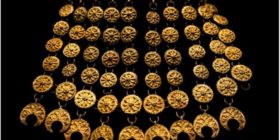The tomb, where Jesus is believed to have been buried and resurrected, is situated in the Church of the Holy Sepulchre in the Old City of Jerusalem.

For the first time in centuries, the surface of Jesus Christ’s traditionally considered tomb in Israel has been uncovered by scientists for restoration purposes, National Geographic revealed in an exclusive report.
The tomb, where Jesus is believed to have been buried and resurrected, is situated in the Church of the Holy Sepulchre in the Old City of Jerusalem.
The burial place, the report states, “has been covered by marble cladding since at least 1555 A.D., and most likely centuries earlier”. This project will give researchers a great opportunity to get valuable insight into Christianity’s most sacred site.
Christian tradition states that Christ’s body, after his crucifixion around AD 30, was laid on a marble slab that had been extracted from a limestone cave.
Three days after his death, women who came to anoint his body are said to have found no remains.
The burial slab or shelf is enclosed in what is called the Edicule, which means “little house” in Latin.
After it was destroyed by a fire, the Edicule was reconstructed in 1808-1810, but it was damaged again in an earthquake in 1927.
Fredrik Hiebert, archaeologist-in-residence at the National Geographic Society, who is also a partner in the restoration project, said, “The marble covering of the tomb has been pulled back, and we were surprised by the amount of fill material beneath it. It will be a long scientific analysis, but we will finally be able to see the original rock surface on which, according to tradition, the body of Christ was laid.”






Leave a reply